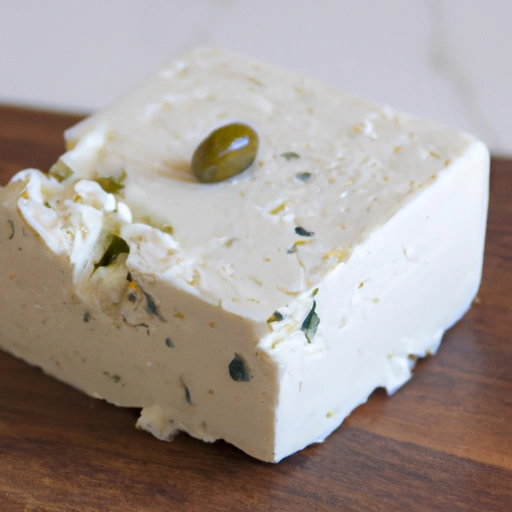Feta
Description

Feta is a brined curd white cheese made primarily from sheep's milk or a mixture of sheep's and goat's milk. Renowned for its rich tangy flavor, crumbly texture, and versatility in cooking, feta hails from Greece and is celebrated as a staple in Greek cuisine. Nevertheless, its popularity has spread worldwide, making it a beloved ingredient in various culinary practices. Feta is typically used crumbled over salads, baked into savory pastries, or served as a table cheese with olives and bread.
Common uses
Feta cheese is commonly seen sprinkled on salads, such as the classic Greek salad, and is also used in a variety of dips like tzatziki. It is a key ingredient in spanakopita and tyropita, traditional Greek spinach and cheese pies, respectively. Feta's crumbly texture makes it ideal for scattering over roasted vegetables, pizzas, and pasta dishes, while its salty flavor adds depth to grain bowls and wraps.
Nutritional value
Calories
Approximately 264 calories per 3.5 ounces (100 grams).
Protein
About 14 grams of protein per 3.5 ounces (100 grams).
Fat
Around 21 grams of fat per 3.5 ounces (100 grams), of which 15 grams are saturated.
Carbohydrates
Negligible carbohydrates, less than 4 grams per 3.5 ounces (100 grams).
Vitamins
Contains vitamins B2 (riboflavin) and B12, important for energy metabolism and red blood cell formation.
Minerals
Rich in calcium and phosphorus, essential for healthy bones and teeth; also contains zinc and selenium.
Health benefits
As a source of calcium and phosphorus, feta cheese supports bone health. Its protein content aids in muscle repair and growth, while the presence of probiotics can promote digestive health. The moderate consumption of feta may also contribute to a balanced diet when included as part of a variety of foods.
Potential risks
Feta cheese is high in sodium and saturated fat, which should be consumed in moderation to reduce the risk of hypertension and cardiovascular disease. Those with lactose intolerance or dairy allergies may need to avoid feta due to its lactose and milk protein content.
Common recipes
Feta enriches the taste of Greek salads, spanakopita, and tyropita. It's also a key component in Mediterranean-inspired dishes, from pasta and grain salads to baked vegetables and omelets.
Cooking methods
Feta can be served raw or cooked. It can be baked, grilled, or added to cooked dishes in the final stage to maintain its distinct flavor and texture.
Pairing with other ingredients
This cheese pairs well with olive oil, oregano, lemon, olives, watermelon, cucumbers, tomatoes, and red onion. In terms of beverages, pair feta with crisp white wines or light reds.
Summary
Feta cheese is a tangy and salty Greek cheese that adds a burst of flavor to numerous dishes. It is nutritious, offering essential vitamins and minerals, but should be consumed in moderation due to its sodium and saturated fat content. With its PDO status, true feta cheese maintains a high standard of production and remains an integral part of culinary traditions around the world.